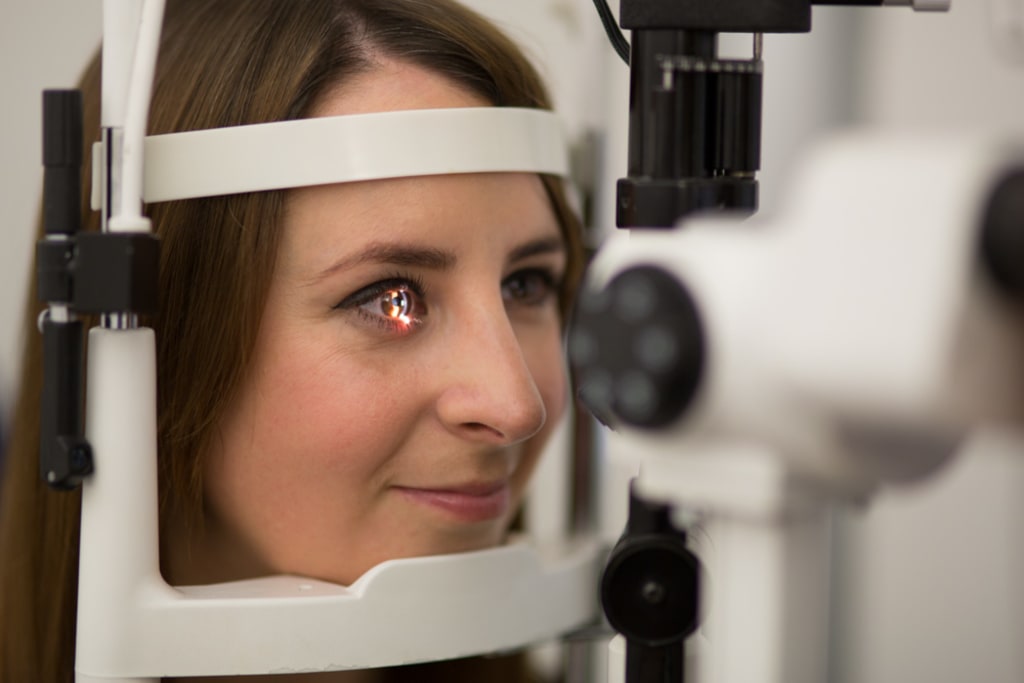
Throughout our lifetime many of us will take eye health and clear vision for granted, it is only once our vision starts to degrade that we become acutely aware of just how important it is to our daily lives. If you find that you are experiencing blurred vision in one eye or both, you are most likely suffering from a refractive error within the eye.
Refractive errors are the most common cause of blurry vision, but not necessarily the only trigger for decreased vision. Some causes of blurred vision are related directly to eye health, but blurred vision may also be a symptom of an underlying health condition.
Causes and Symptoms of Blurry Vision
There are many reasons your vision may begin to deteriorate over time, but most commonly this is due to a refractive error in the eye. Most refractive errors are easily corrected with non-surgical options (glasses, contact lenses) or highly successful outpatient procedures (laser refractive surgery, refractive lens exchange).
Myopia
Myopia (near-sightedness) is the most common refractive error found across the globe. Caused by an excessive axial length within the eye, patients with myopia have difficulty focusing on objects at a distance.
Symptoms of myopia include:
- Headaches
- Difficulty focusing on distant objects
- Excessive squinting
Most often myopia is diagnosed during childhood, during primary and high school years, if you suspect your child may be near-sighted be on the lookout for the above symptoms, but also:
- Do they need to sit closer to the front of the class in school, or close to the TV at home ?
- Frequent eye rubbing
- No awareness of objects at a distance
Fortunately, myopia is easily treatable, but if you suspect yourself or your child are experiencing symptoms of near-sightedness you should book in for a check-up with your eye specialist.
Hyperopia
Hyperopia (far-sightedness) displays similar but slightly different symptoms to myopia. Caused by a decrease in axial length, the defining difference to myopia is that while distant objects remain clear, near-sight vision becomes blurry.
It is worth noting, however, that extreme cases of hyperopia can cause decreased vision over a range of visual depths, including distance vision.
Symptoms of hyperopia include:
- Headaches
- Strained eyes
- Squinting
- Blurred near-sight vision
Hyperopia can be diagnosed with a simple eye examination and is easily treatable with both non-surgical and surgical options available.
Astigmatism
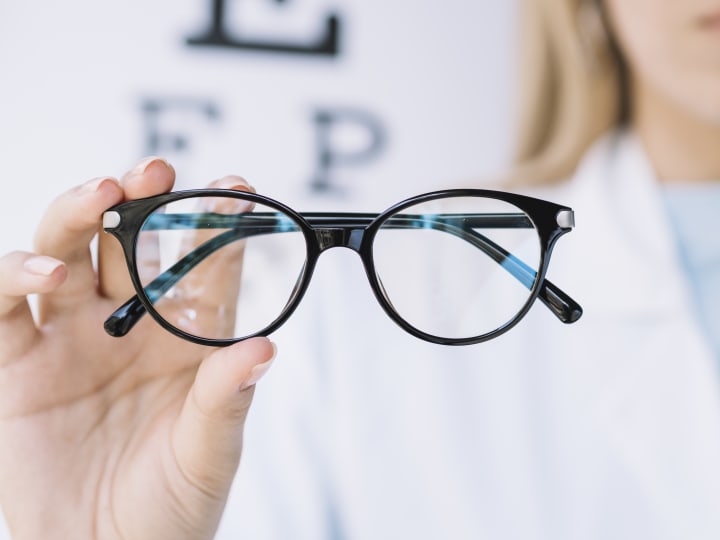
Blurred vision over a range of distances can also be a sign of astigmatism. Astigmatism is usually genetic, but can occur if a patient has experienced eye trauma before.
There are two types of astigmatism, corneal and lenticular. Corneal astigmatism refers to refractive errors caused by a misshapen cornea, whilst lenticular astigmatism is caused by the eye’s lens being distorted.
Astigmatism can display many of the same symptoms as myopia and hyperopia:
- Blurry vision over a range of distances
- Poor night time vision
- Eyestrain
- Headaches
- Squinting
Treatment options for astigmatism follow the same path as other refractive errors and is diagnosed in much the same way.
Cataracts
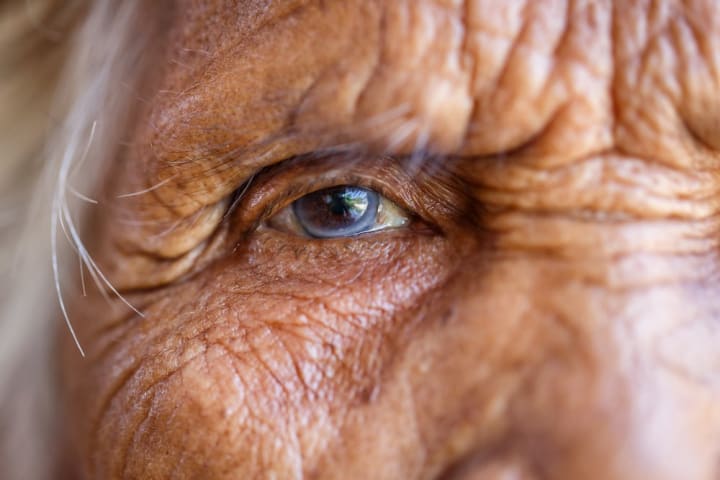
If you have noticed your vision becoming clouded, or taking on a yellowed hue, you may be developing cataracts. Most often seen in old age, cataracts are a whitening of the eyes ordinarily clear lens caused by excess proteins bunching together.
Cataracts are painless, and most people don’t realise they have developed them until their vision becomes adversely affected; if left untreated, vision can be obscured to the point of blindness.
You may have cataracts if you display the following symptoms:
- Clouded/blurred vision
- Haloes or ‘starbursts’ surrounding light sources, especially in low-light settings
- Double vision in one eye
- Photosensitivity (sensitivity to light)
- Rapid changes in eyeglass prescription
- ‘Yellowing’ of vision
Cataracts are easily diagnosed and treated with specialised cataract surgery. Cataract surgery is a type of refractive lens exchange (lens replacement surgery) where the clouded, natural lens is removed to be replaced with an artificial one (intraocular lens, IOL). Surgical cataract procedures are outpatient surgeries, wholly painless, and take roughly 20 minutes per eye.
Presbyopia

Presbyopia is an age-related refraction error, displaying similar symptoms to hyperopia. Generally developed when a patient is over 40 years of age, presbyopia is a widespread cause of blurry vision.
Whereas hyperopia is caused by a decrease in axial length of the eye, presbyopia is caused by a stiffening of the eye’s natural lens over time; causing difficulty in near-sight focusing activities.
If you have had good vision up until your 40s but start to experience any of these symptoms, you may be developing presbyopia:
- Headaches after reading
- Difficulty focusing on close objects
- Needing bright lights to read
- Squinting
It is possible to have hyperopia and develop presbyopia as you age, since hyperopia is genetic and can be present from birth, whilst presbyopia develops as part of the natural aging process.
Glaucoma
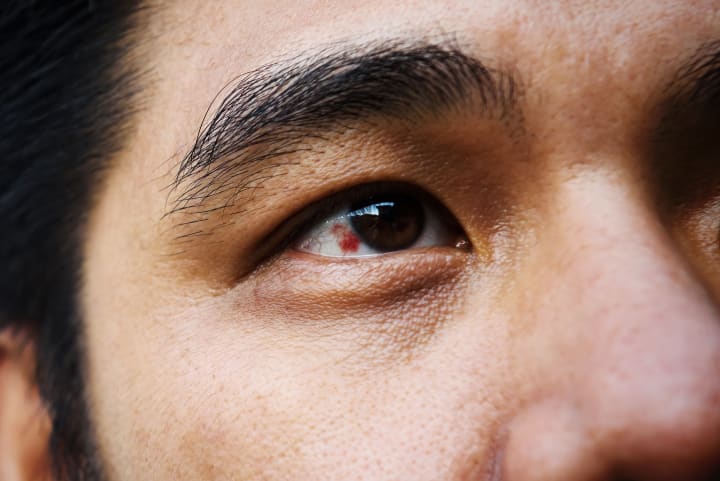
Glaucoma is caused by an increase in intraocular pressure (pressure within the eye) which in turn can cause pain and damage the optic nerve. Glaucoma can cause permanent blindness over time if left untreated.
During the early development of glaucoma, there may be no symptoms or pain; at this point the only way to diagnose glaucoma is with an eye examination. Signs of glaucoma can display themselves quite quickly, so if you suddenly experience any of the following symptoms, you should seek help immediately:
- Acute eye pain, it may feel as though the eye is throbbing
- Redness of the eye
- Headaches
- Blurry vision, may be described as tunnel vision
- Haloes surrounding light sources
- Heavily dilated pupil
- Nausea
If there is a family history of glaucoma, it is vital to keep regularly scheduled eye exams. Glaucoma can be prevented, but any vision loss if allowed to develop, cannot be recovered.
Glaucoma is a lifelong condition and is often treated with eye drops that reduce the internal pressure of the eye by promoting fluid drainage or decreasing the production of fluid within the eye. Surgical options are available and are permanent; called an iridectomy a small hole is made in the iris to allow drainage of fluids within the eye.
Diabetic Retinopathy

Diabetic retinopathy is a possible complication of poor diabetes management, caused by excessive blood sugar levels damaging the retina (back of the eye). Retinopathy is a sight-threatening disease that can cause permanent loss of vision if left undiagnosed.
It can take a number of years for diabetic retinopathy to reach this critical stage and is best managed by:
- Good monitoring and management of blood sugar levels, along with cholesterol and blood pressure
- Regular diabetic eye screening, people with diabetes should have an annual screening to monitor any conditions that may arise as a result of the condition. Early diagnosis will allow the condition to be treated in its infancy.
If you have diabetes and start to experience these symptoms, it may be a sign of diabetic retinopathy:
- Sudden loss of vision
- A sudden increase in floaters
- Blurred vision
- Eye pain
If you have been diagnosed with diabetic retinopathy, you may not require any further treatment if there isn’t a significant risk to your vision. However, you will be advised to manage the condition to halt the development.
Treatments are available for diabetic retinopathy and include, laser treatments, medical injections, or operations to remove scar tissue from the eye.
Dry Eye
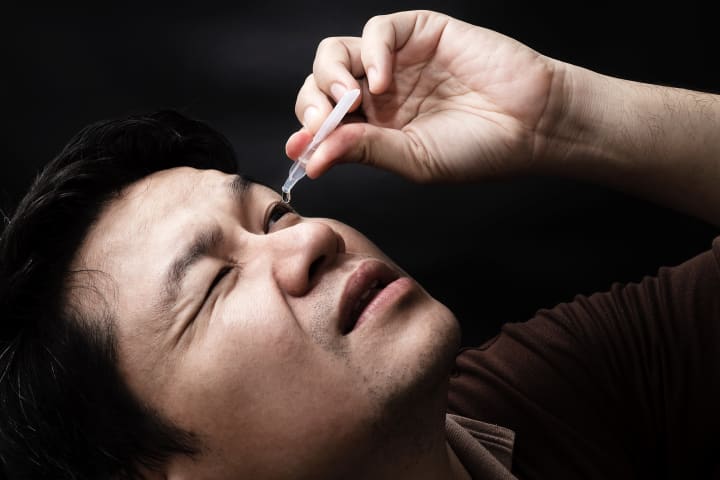
Dry eye occurs when the eyes natural tears aren’t able to provide sufficient lubrication for the eye; this can be due to the quality or the amount of tears produced. Some medication that is applied via eye drops can also cause dry eye symptoms.
Treatment for dry eye will usually include some sort of artificial tears, applied in drop form. If you are a smoker it is also beneficial to quit, as the smoke from cigarettes can cause excessive evaporation of the eye’s natural tears.
Symptoms of dry eye include:
- A feeling of grittiness within the eye
- Photosensitivity
- Redness
- Blurred vision
- Struggle wearing contact lenses
- Poor night time vision
Dry eye can also be a side effect of laser eye surgery, and this may be in part to the antibiotic eye drops supplied for use post-surgery. If you experience dry eye symptoms for extended periods, it may be a sign of another underlying issue.
It is best practice to keep to regularly scheduled eye examinations to stay on top of any existing or identify any potential complications that may develop.
Treatment Options

With most cases of blurred vision being caused by refractive errors, treatment is relatively easy to come by. Not only are tried and tested methods of correction still applicable, such as eyeglasses and contact lenses, but advances in technology have made surgical options easily accessible for everyone.
Non-Surgical
Eyeglasses—Currently, the most popular option the world over. Eyeglasses are readily available and affordable; they are used for correcting refractive errors caused by myopia, hyperopia, astigmatism and presbyopia.
New glasses will have to be bought if or when your prescription worsens, to keep vision at the same level.
Contact lenses—Contact lenses are a popular alternative to eyeglasses, and many will opt for lenses over spectacles for aesthetic purposes. Worn directly on the eye, lenses do carry an increased risk of infection compared to other corrective measures.
Financial costs for contact lenses can be quite high also, with the need to replace lenses often, cost of solutions and regular eye examinations.
Laser Refractive Surgery
Laser refractive surgery (laser eye surgery) is becoming more and more popular thanks to advancements in technology, offering a fantastic safety record with exceptional results being the norm. Very affordable, laser refractive surgery is seen as a more permanent option than eyeglasses or contact lenses.
The two most common laser refractive procedures are:
LASIK—During LASIK surgery, a femtosecond laser is used to create a corneal flap, exposing the tissue underneath. Once the corneal flap has been created, a second laser (excimer laser) is used to reshape the cornea allowing the eye to focus light correctly on the retina once more.
LASIK carries a high success rate, with a minimal risk of post-surgery complications. The chance of requiring a second laser procedure after LASIK is also very small, although LASIK doesn’t account for age-related presbyopia.
It is primarily used to treat myopia, hyperopia, presbyopia, and astigmatism.
LASEK—LASEK works much in the same way as a LASIK procedure, wherein the cornea is reshaped using an excimer laser. However, instead of creating a corneal flap in the first instance, during LASEK a thin layer of cells called epithelial cells are removed and discarded.
Because of this fundamental difference in the first step, there is a slightly longer recovery time during the first few days, as the removed cells regenerate. Overall full recovery between LASEK and LASIK is comparable, with LASEK usually being reserved for patients who have abnormal eye anatomy, thinning of the cornea, etc.
Lens Replacement Surgery
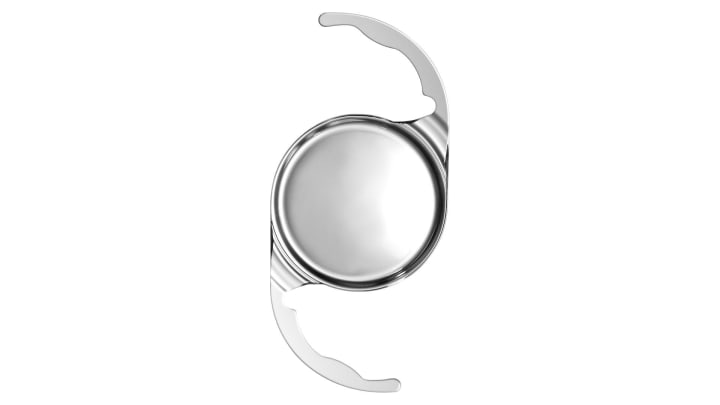
Lens replacement procedures, both refractive lens exchange (RLE) and ICL (implantable Collamer lens, phakic intraocular lens) are surgeries that involve implanting an artificial lens within the eye to correct refraction errors. Cataract surgery is also a refractive lens exchange procedure, with the identifying difference being that the lens removed has become cataract affected (started to whiten and become cloudy).
RLE and ICL procedures will typically be reserved for older patients, or as alternatives for patients who have been seen as unsuitable to receive laser refractive treatment.
During RLE/cataract surgery the eyes natural lens is first removed, to be replaced with an artificial intraocular lens. This can correct refraction errors including myopia, hyperopia, cataracts and astigmatism.
ICL’s can be thought of as a permanent contact lens, but unlike RLE procedures, the eye’s natural lens is not first removed. Instead, the IOL will sit in front of the lens already present, either in front of or behind the iris.
Conclusion
I am a full time ophthalmic surgeon working on laser eye surgery in London, and I am constantly creating informational guides regarding common eye conditions and their treatments.
I hope you have found this guide helpful, and it has gone some way to educate you on the common causes of blurred vision. Look out for more posts coming from me, where I'll be exploring eye health topics and treatments in more depth.
About the Creator
Enjoyed the story? Support the Creator.
Subscribe for free to receive all their stories in your feed. You could also pledge your support or give them a one-off tip, letting them know you appreciate their work.






Comments
There are no comments for this story
Be the first to respond and start the conversation.